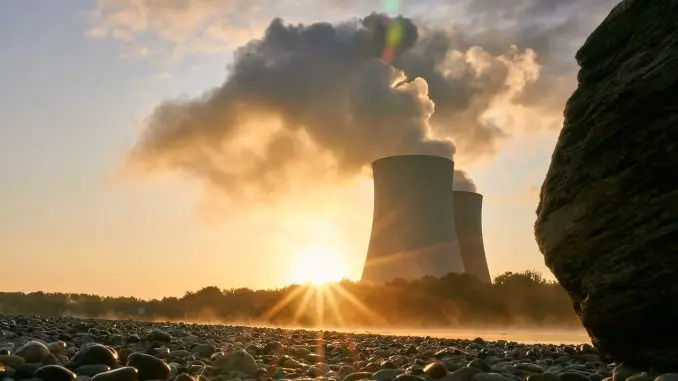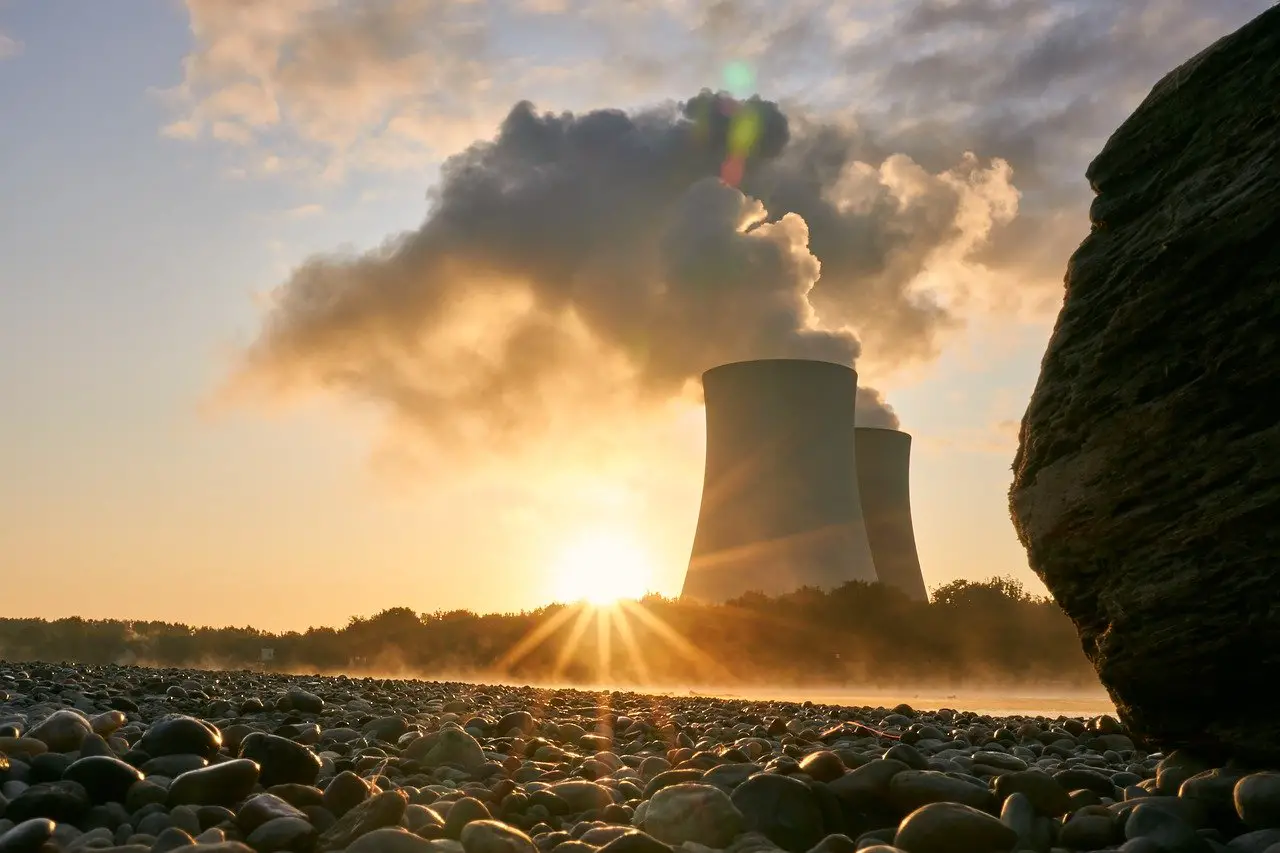
Nuclear power avoids emissions of greenhouse gases and emissions of harmful gases into the atmosphere. In this way, nuclear power is very clean. The disadvantages are instead the beginning and the end of the chain – in the uranium mining and waste management, respectively.
Uranium mining causes major damage to nature and the environment. The uranium levels are low and the ore is mined in open quarries, which causes wounds in nature. The miners are affected by cancer to a greater extent than normal.
Nuclear waste is radioactive and must be kept separate for 100,000 years. As yet, the waste issue has not been definitively resolved, but the waste is stored for the time being pending a final disposal site.
Fission is a chain reaction, which continues by itself if nothing stops it. If it runs crazy, it can cause a meltdown, which is the most serious form of a nuclear accident. Depending on how the nuclear power plant is designed, a core melt leads to emissions of radioactive radiation to the environment
Some governments have recommended to not use the claim “carbon dioxide-free nuclear energy” in advertisements. Justification: Nuclear power plants are not carbon dioxide-free. Although they do not use fossil fuels in the electricity generation themselves, from a life cycle perspective, they emit almost a third as much carbon dioxide per kWh as the coal power plants (with Carbon Capture & Storage) do.

How, then, could the nuclear powers argue for their alleged “climate neutrality”? Well, by using the term fossil-free instead of carbon-free. By that, they understood that “fossil-free” would only refer to the electricity generation itself, not to everything that was required for construction, operation, maintenance, and dismantling.
For example, uranium mines and uranium enrichment cause very large carbon dioxide emissions in the USA, Canada, Namibia, Australia, and Kazakhstan. They and other surrounding activities are neither fossil-free nor carbon-dioxide-free. Renewable energy is also not climate neutral. But neither wind, sun, wave nor water comes close to the nuclear power’s environmental impact also on climate.
Therefore: Don’t be fooled! The impact of electricity production on the climate should, of course, be assessed from a life cycle perspective. In essence, “fossil-free” and “carbon dioxide-free” are the same – one certainly refers to the intake side, the other to emissions, but they are inextricably linked by the laws of natural science. Therefore, it is better to use the term climate-saving. An appropriate definition of low-carbon electricity generation is emissions of less than 30 grams CO2 / kWh.
Some studies claim only 5g CO2 / kWh for nuclear power, but this has been questioned by the Stanford study on the environmental impact of nuclear power with reference to the so-called EPD system.
The Stanford study is published in a scientific journal, Energy and Environmental Science, 2009,2, pp. 148-173, and has 117 scientific references and no external sponsors.
Stanford is the university that delivered the most Nobel laureates in physics and is one of the world’s most renowned universities. The study has analyzed over a hundred life cycle analyses.
Uranium enrichment also causes very large carbon dioxide emissions. For example, enrichment in Kentucky, USA, is powered by two 1,000 MW coal plants.
Trump has actually opened up the use of nuclear weapons. It can be added that the risk of nuclear war or the risk of a terrorist attack on nuclear reactors affects the Stanford study’s result of about 125 frames CO2 / kWh by about two percent.
The Stanford study was done before the nuclear disaster in Fukushima, which led to new, comprehensive energy-intensive security measures. They increase carbon dioxide emissions from the reactors. On the other hand, solar cells are constantly reducing their carbon dioxide emissions due to technological developments.
When assessing nuclear power’s climate impact from an economic point of view, it can be noted that it is at least ten times more expensive to reduce carbon dioxide from the atmosphere with nuclear power compared to renewable energy. Solar and wind power are at least half as expensive as new nuclear power and cause at most one-fifth of the carbon dioxide emissions of nuclear power according to the table.
WHAT ARE THE BENEFITS OF NUCLEAR ENERGY?
Proponents point out that nuclear power is one of the forms of electricity generation that has the lowest carbon dioxide emissions. As you probably know, carbon dioxide is not a high-rise for the climate as it is the greenhouse gas that contributes most to the enhanced greenhouse effect.
Nuclear power plants are also very efficient since a single large nuclear power plant can produce as much electricity during a year as about 1000 modern wind turbines.
Nuclear power
There are also disadvantages to this type of electricity generation. Nuclear power affects the environment in the production of fuel. The uranium needed during production must be broken and then a local change in the landscape occurs.
Uranium mining is a very environmentally hazardous activity. The uranium itself is very toxic and in the quarry, large quantities of radioactive residue material are created which risk leakage into the watercourses.
In addition, the issue of waste management has not been resolved. Now the nuclear waste is stored in copper canisters buried 500 meters underground and filled with bentonite clay. However, research shows that the copper risks corroding and that cracking can then occur.
Another major disadvantage of nuclear power is that radioactive substances are created during operation. An accident at a nuclear power plant can mean that radioactive substances are released that can affect the environment in a devastating way.
You may remember the terrible nuclear accident in Chernobyl over 30 years ago? A reactor exploded and a cloud of radioactive particles spread across Europe, resulting in the loss of many lives.
Leave a Reply